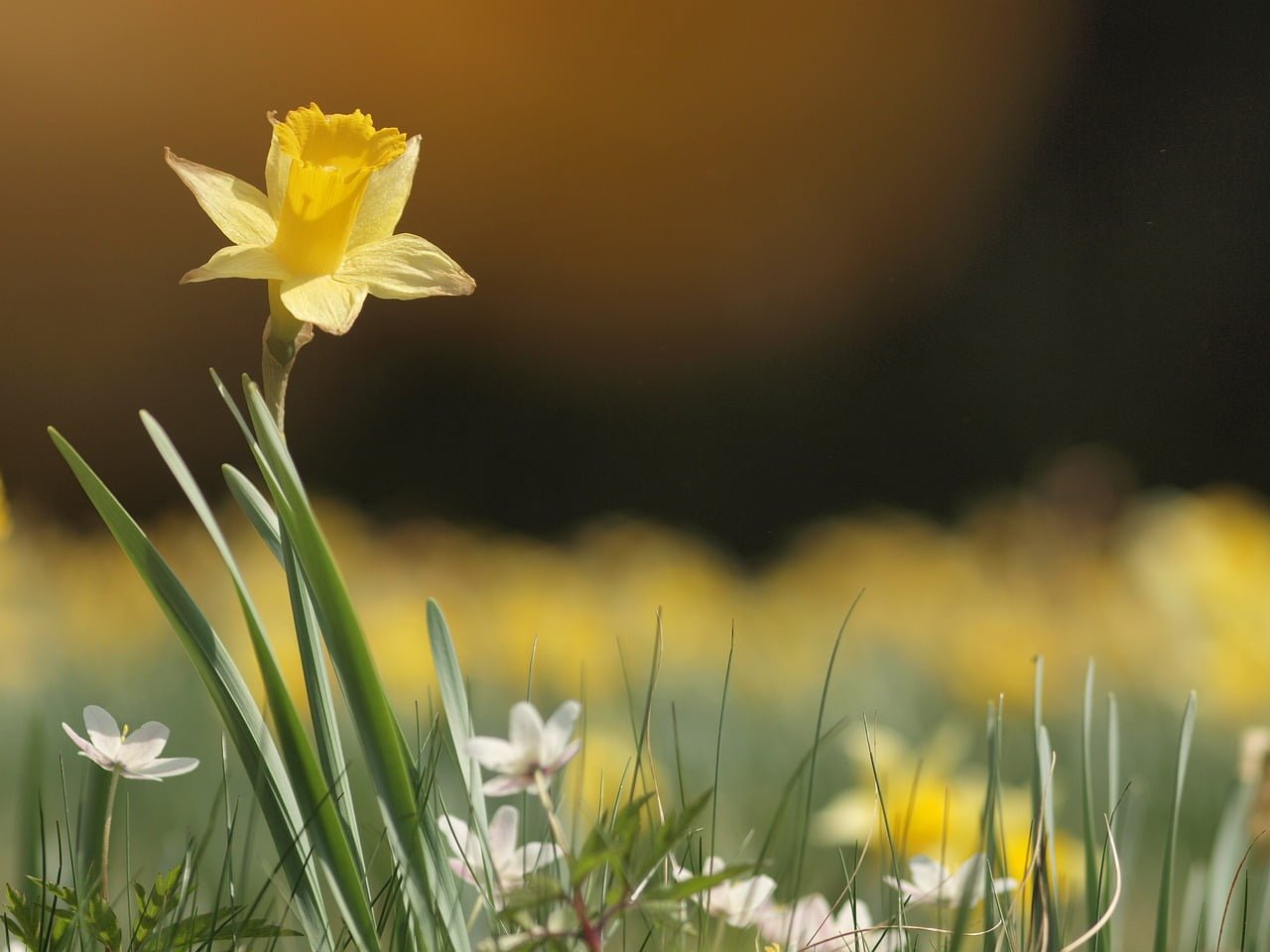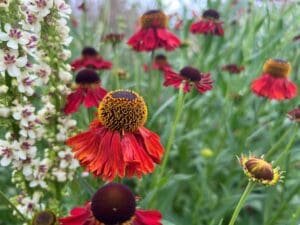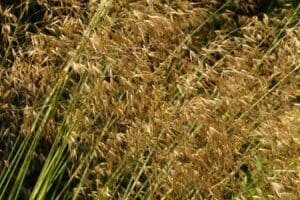The best time to plant daffodil (narcissi) bulbs in the UK is in autumn, September in particular is recommended as the ideal month to plant daffodils.
Planting daffodil bulbs in September gives the roots a chance to develop before the soil cools. Foliage and flowers will appear between January and April depending on your chosen variety.
This post contains affiliate links which means we may make commission from any qualifying sales with no extra cost to yourself.
You may also be interested in: Spring Flowering Bulbs
Why Choose Daffodils
With their bright yellow or elegant white blooms, daffodils are a welcoming sign of spring and a favourite among many UK gardeners.
They are low-maintenance and return year after year, making them a fantastic addition to your garden.
Choosing and Preparing Daffodil Bulbs
Towards the end of summer and the start of autumn, daffodil bulbs become widely available. When choosing, opt for firm, large bulbs that show no visible signs of mould.
Top Tip
When planting your daffodil bulbs, remember they love a sunny spot and well-drained soil.
Planting Location and Method
Daffodils can be planted in lawns, mixed grasses, borders, or pots and containers. The bulbs prefer a sunny spot with good drainage. Loosen any compacted soil and remove weeds before planting.
To provide the best start for your bulbs, you can add some organic matter to improve the soil.
Plant the bulbs with the pointy end facing upwards, at a depth that is three times their height. Leave some space between each bulb to allow them to multiply in the following years. Water thoroughly after planting.
Planting Daffodils in Pots and Containers

Yes, you can plant daffodils in pots and containers! Pair them with tulips or other spring flowers to create a stunning spring display. Make sure your containers don’t dry out. Regular watering and ensuring good drainage is crucial to keep the bulbs healthy.
Pruning and Care
Once the daffodil flowers begin to fade, it’s time to remove them. However, don’t be tempted to cut back the leaves until they rest naturally, usually 4-6 weeks after flowering. This period is essential as the bulbs are storing energy for the next year’s bloom. Cutting the leaves too early can hinder their return the following year.
Popular Daffodil Varieties in the UK
1. Narcissus 'Tete-a-Tete'
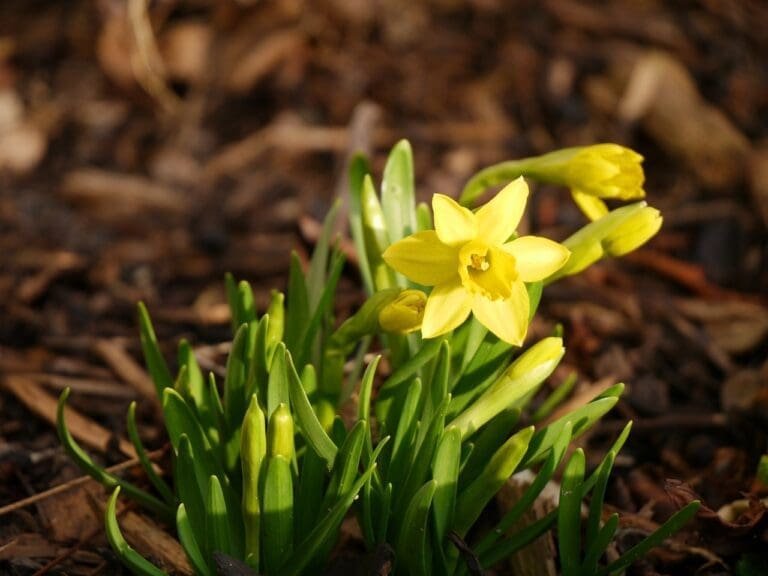
Arguably one of the most popular dwarf varieties of daffodils in the UK, the ‘Tete-a-Tete‘ is a spring favourite. They are low-growing, reaching a height of around 15-20cm, and are perfect for planting at the front of borders or in pots and containers.
‘Tete-a-Tete‘ daffodils have charming golden-yellow flowers that typically bloom in March and April. Each stem usually produces one to three flowers, making them a delightful addition to any spring garden. They are hardy and reliable, coming back year after year to brighten up the garden.
2. Narcissus 'Dutch Master'
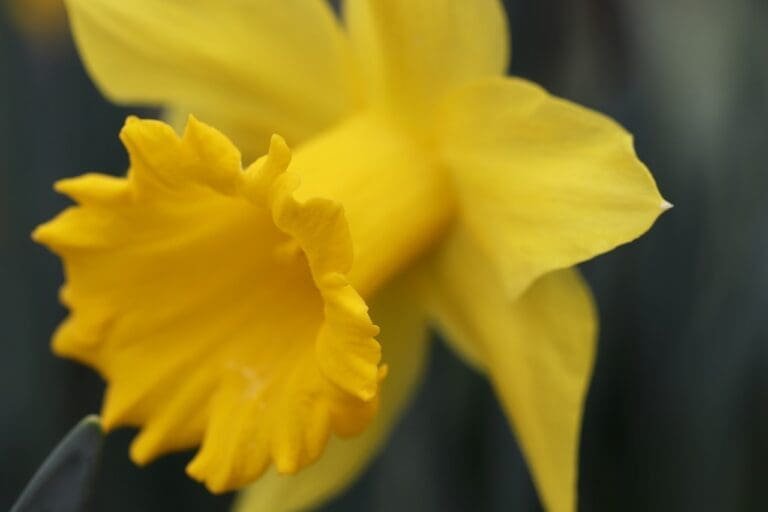
The ‘Dutch Master‘ is a classic, traditional daffodil with large, striking yellow blooms. They have long, trumpeted centres surrounded by bright, pointed petals. These daffodils are hardy and are excellent for mass plantings, making a bold statement when planted in large drifts.
‘Dutch Master‘ daffodils are typically larger than other varieties, reaching a height of up to 40-45cm. They usually bloom a bit later in the spring, providing a splash of colour when other early spring bloomers have started to fade.
3. Narcissus 'Pheasant's Eye'
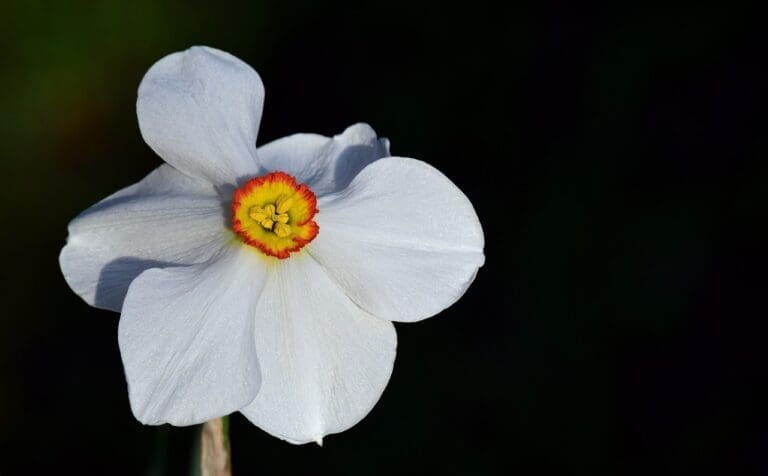
The ‘Pheasant’s Eye‘ daffodil, also known as Narcissus poeticus, is a vintage variety with a long history in UK gardens. This daffodil stands out with its white petals and small, red-rimmed yellow cups that have a green centre. Its name comes from the eye-catching red circle that resembles a pheasant’s eye.
‘Pheasant’s Eye‘ is a late spring bloomer, often flowering in April and May, providing a lovely end to the daffodil season. They are also renowned for their pleasant fragrance. Standing at a height of up to 35-40cm, they work beautifully in beds, borders, or even under deciduous trees.
The Impact of Daffodils on Wildlife
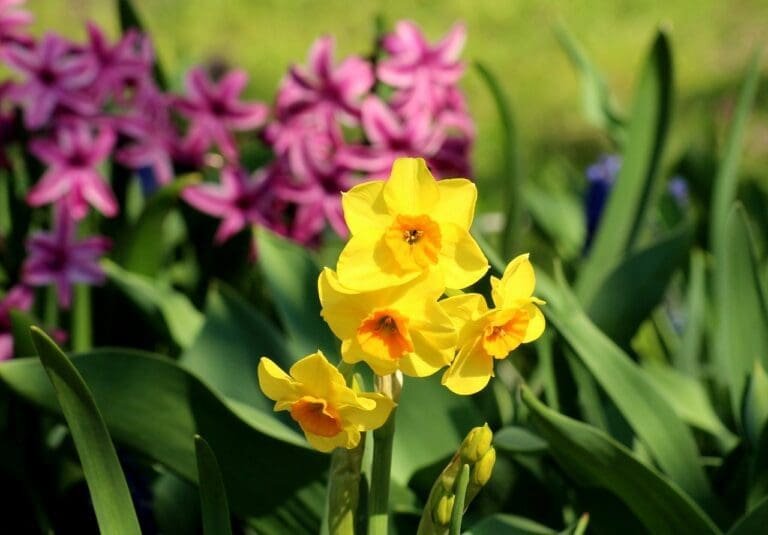
As gardeners, we’re not just cultivating plants – we’re also nurturing a little patch of ecosystem. So, what role do daffodils play in our garden’s wildlife?
Beneficial to Bees
In early spring, when food sources can be scarce, daffodils provide a vital nectar source for bees and other pollinators, helping to support their populations.
However, keep in mind that not all daffodil varieties are equally attractive to bees. Those with simpler flower forms, such as ‘Pheasant’s Eye’, are usually more accessible for bees than the ones with more complex blooms.
Deterrent to Deer and Rodents
Daffodils have a slight toxicity, which makes them unappetising to most wildlife pests like deer and rodents. Planting daffodils can therefore serve as a natural deterrent, protecting more vulnerable plants in your garden.
Attracting Birds
While daffodils themselves don’t directly attract birds, the insect life they attract can provide food for various bird species. Therefore, having daffodils in your garden contributes indirectly to a bird-friendly habitat.
In conclusion, daffodils not only enhance your garden with their cheerful blooms, but they also contribute positively to your local ecosystem.
Frequently Asked Questions
Q. How late can you plant daffodil bulbs in the UK?
While the optimal time to plant daffodil bulbs in the UK is in September, you can continue to plant them as long as the ground is not frozen. This can often extend into late autumn or even early winter. However, keep in mind that bulbs planted later might bloom a bit later than those planted earlier in the autumn.
Q. Can you leave daffodil bulbs in the ground all year?
Yes, you can! In fact, daffodils prefer to stay in the ground year-round. Once the daffodils have finished blooming, leave them in place. The foliage will continue to gather sunlight and create food for next year’s blooms. Once the foliage turns yellow and dies back, it can be cut off. The bulbs will rest until the next spring, when they will bloom again.
Q. How many daffodils should I plant together?
The number of daffodils you should plant together depends on the look you’re aiming for. For a natural look, plant the bulbs in groups of at least 5-7, with each bulb around 10cm apart from its neighbour. If you want a denser, more vibrant display, you can plant the bulbs closer together, but they should still have a bit of space to grow.
Q. Do daffodils multiply?
Yes, daffodils do multiply! Over time, each daffodil bulb will produce offsets, which are smaller bulbs growing off the parent bulb. As these offsets grow, they will eventually bloom themselves, leading to more daffodils in your garden year after year.

